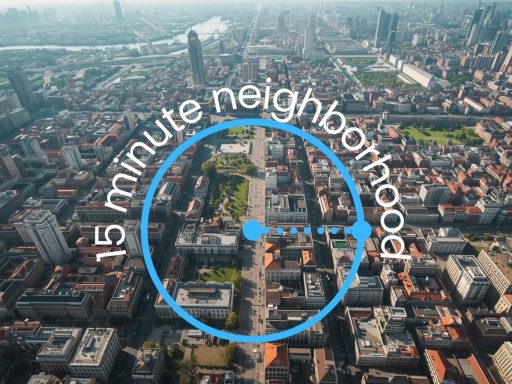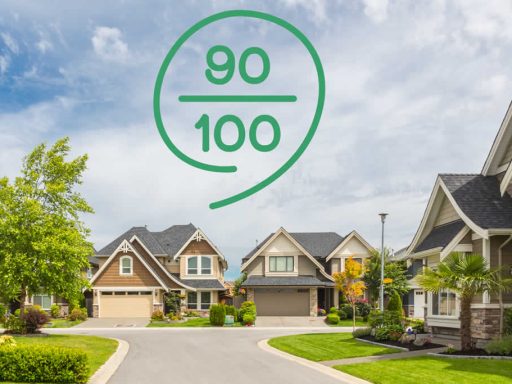When future home-buyers were asked what matters most, one stat jumped out: about 61% said that a “good neighborhood” was one of their top priorities. According to Clever Real Estate, that means more than half of buyers place location before even specific home features — before number of bedrooms, finish-levels, or design trends. They understand that the house might change, but the neighborhood is where you live day after day.
Understanding that shift matters: it signals that what used to be “nice to have” for many buyers—neighborhood quality—is now a non-negotiable. In a market of tight inventory and high prices, one way buyers protect their decision is by picking a place where the surrounding community supports their lifestyle and the long-term value of their investment.
This blog explores what exactly “good neighborhood” means to buyers today, why it matters so much, and how data-driven products like Local Insights help turn that priority into action.
What Buyers Meant When They Picked “Good Neighborhood”
The 61% figure comes from a survey of prospective home-buyers who ranked their most important priorities. According to the report, while affordability (62%) and home features matter, “location” in its broadest sense stood out: good neighborhood (61%), desirable location (58%), and safe area with low crime (51%).
From the survey, we can distill what “good neighborhood” means in practice:
-
Stability and longevity: Buyers expect a place where residents tend to stay, houses hold their value, and the community doesn’t fluctuate wildly.
-
Safety and quality of life: Low-crime, well-maintained areas with clean public spaces, good schools, and dependable infrastructure.
-
Lifestyle compatibility: Proximity to amenities, transit, green spaces, and the right mix of social and leisure options that match the buyer’s life stage.
-
Investment sense: Neighborhoods that show upward trends in housing and livability tend to protect the buyer’s equity and satisfaction.
So for 61% of buyers, it’s not just about the house—they’re effectively saying: “Choose the right neighborhood and much of the rest will fall into place.”
Why Neighborhoods Are Winning Over Home Features
1. Homes Can Be Changed, Neighborhoods Cannot
The survey notes wisely that location and neighborhood are “much more difficult to change than features of a home.” You can repaint, renovate, or expand a house—but you cannot realistically change the local park, the school district, the nearby amenities, or the crime stats. That permanence makes neighborhood quality an anchor for long-term living decisions.
2. Emotional & Financial Stakes Are Higher Than Ever
The survey also reveals that 82% of buyers made compromises during their search. The hardest compromise? Affordable home price. But location stood apart as a nearly non-negotiable. Buyers are cutting elsewhere but holding firm on neighborhood quality.
Less than 5% of buyers regret the location of their home; only 3% regret the neighborhood. That’s a telling statistic: good neighborhoods aren’t just desirable—they’re protective against regret.
3. The World Is Changing: Remote Work, Mobility, Priorities
Post-pandemic shifts changed how we live, work, and connect. With more flexibility, buyers are choosing neighborhoods less for commute length and more for lifestyle quality. Neighborhoods with access to parks, walkable streets, strong community bonds—and good schools—even for those without young kids—are in demand.
What Makes a Neighborhood “Good” in 2025?
With the survey’s headline in mind, what actual factors make up a “good neighborhood”? Below are the top dimensions—each of which can be measured, compared, and used in decision-making.
Safety & Crime
If 51% of buyers flagged “safe area with low crime” as a top priority, this dimension clearly matters. A low crime rate drives comfort, peace of mind, and long-term value.
Housing Affordability & Market Trends
Affordability (62%) was still the most-commonly prioritized metric. A neighborhood that feels good but is wildly unaffordable may become a liability. Conversely, an affordable area with rising value creates both lifestyle and investment upside.
Schools & Family Support
Even buyers without children often look at school quality—because strong schools indicate community investment, stable demand, and future resale strength.
Amenities & Walkability
Access to cafés, parks, shops, grocery, transit—these features shape day-to-day life and social connection. Walkability in particular has emerged as a clear priority (84% of respondents value it, in a survey by Better Homes & Gardens.
Local Economy & Job Access
A vibrant local economy and employment choice matter especially to younger buyers and investors. Even remote-friendly buyers want neighborhoods with growth potential and quality services.
Community Vibe & Diversity
People increasingly understand that a rich community—not just demographics but connections, cultural outlets, neighborhood identity—contributes to long-term satisfaction. As neighborhoods diversify and evolve, the right social environment becomes the intangible “good” part of the good neighborhood.
How to Turn the Survey Insight (“Good Neighborhood = 61% Priority”) into Action
For Home Buyers
-
Begin by ranking neighborhoods rather than homes: treat neighborhood quality as your filter, not optional.
-
Use data-driven platforms (like Local Insights) to assess neighborhood quality—walkability, crime, schools, etc.—at a hyperlocal level.
-
Compare multiple neighborhoods head-to-head on the key dimensions above instead of jumping into a listing that “looks right.”
-
Consider future lifestyle: will the neighborhood serve you 5–10 years from now? Trends matter.
For Real Estate Agents & Brokers
-
When you pitch listings, emphasize neighborhood story: “Here’s how this neighborhood ranks across safety, schools, lifestyle—61% of buyers say that’s their top priority.”
-
Provide neighborhood data reports (via Local Insights) as part of your marketing toolkit—it builds credibility and matches buyer priorities.
-
Use the survey data as a content piece: blog posts, email campaigns, social graphics highlighting that “good neighborhood” is more important than ever.
For Investors
-
Don’t just pick the house—pick the ZIP code or block group that aligns with long-term livability.
-
Use neighborhood quality as a hedge: areas with good schools, strong amenities, low crime still outperform.
-
Look for early signals—amenity growth, transit investment, school upgrades—that indicate a neighborhood improving.
Why Local Insights Is Vital for This Shift
When 61% of buyers say a good neighborhood is a top priority, having access to reliable, granular data becomes critical. That’s exactly where Local Insights shines. Here’s how it helps:
-
Address-level data within a 1-mile radius gives real context—not city-wide averages.
-
Over 300 data points—covering crime, schools, housing affordability, amenities, commute and more—let you assess a neighborhood across all the dimensions buyers care about.
-
Comparative reports let you stack neighborhoods side-by-side, turning survey insights into visuals and decision tools.
-
With Local Insights, you don’t just know if a neighborhood is “good” in general—you know why and how much.
In short: when neighborhood quality is the priority, data becomes the differentiator.
Challenges to Watch & How to Navigate Them
While the 61% figure is powerful, there are a few caveats buyers and agents should keep in mind:
-
“Good neighborhood” is subjective—the features one buyer values may differ from another. Use data to align what you value.
-
Trends can lag—data may show improvement or decline over time; look for multi-year metrics.
-
Compromises still happen—82% of buyers made at least one compromise. The key is to compromise outside neighborhood quality, not within it.
-
Neighborhoods evolve—transit expansions, zoning changes, demographic shifts can all influence long-term livability. Stay informed.
The Takeaway
The takeaway is clear: when more than six in ten buyers list a good neighborhood as their top priority, investing in neighborhood analysis is no longer optional—it’s essential. The home may be important, but the neighborhood is the foundation.
For anyone buying a home, working with buyers, or advising investors, the message matters: “Start with neighborhood quality, then evaluate the home within that context.” And with tools like Local Insights, you’re not guessing—you’re making data-driven decisions.
In today’s market, the neighborhood you pick might matter more than the house itself. The 61% figure tells you that. The deeper question is: Will your data help you pick the right one?






